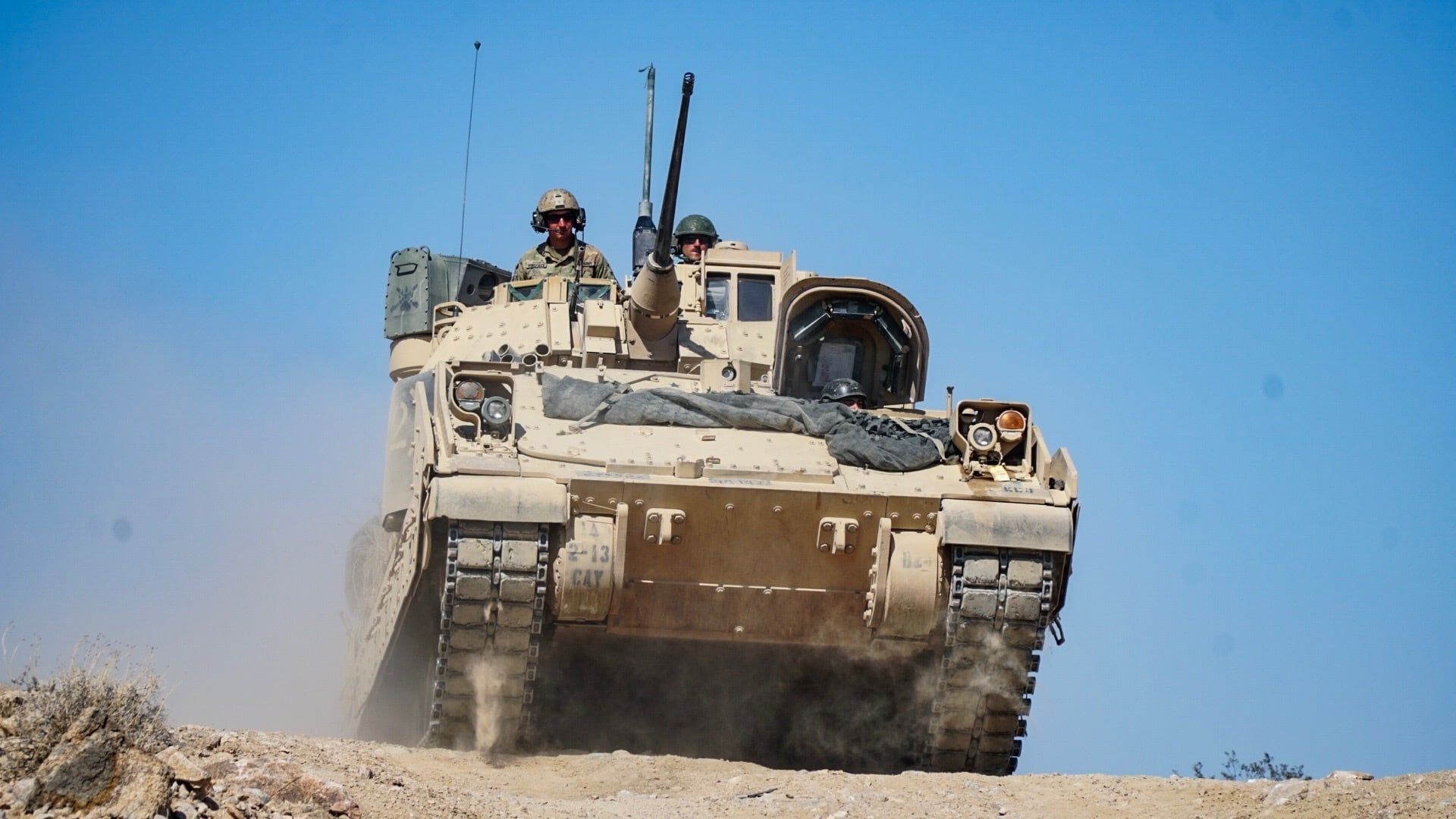WASHINGTON — The U.S. Army is using digital engineering to develop its next-generation ground combat vehicles, including the optionally manned fighting vehicle.
In its simplest iteration, digital engineering moves the design process from 2D blueprints to 3D virtual models, which can then be plugged into realistic simulations to test performance.
At the Association of the U.S. Army’s annual conference on Oct. 12, Army officials said they plan to use a digital engineering approach to develop the OMFV, which is being designed to replace the Bradley Infantry Fighting Vehicle.
“We intend to use digital engineering in a model-based environment, and that is in the next phase, phase 3, where we’re going to award those contracts to design vehicles. We’re currently working through exactly what that looks like, but we want to get to a cloud-based tech stack so we have the ability to get in there and take a look at the designs as they evolve in real time, and then take those designs and the data that comes with them and plug them into models and simulations so that we can run them while they’re still digital, and we can use that technique to avoid costly failures on a test range,” said James Schirmer, deputy director of the Program Executive Office for Ground Combat Systems.
While physical testing can’t be entirely eliminated, he added, digital testing can greatly reduce risk throughout the development process.
The Army is still working out how it will implement digital engineering. The service is looking at what cloud environment it will use, whether it wants the model to be hosted by the contractor or the Army, and what sort of contract language it will use.
“There are some hard questions that the Army has to decide early,” Schirmer said.
A draft request for proposals outlining the Army’s digital approach for the OMFV will be issued early next year.
While Schirmer said the third phase will mark the beginning of the service’s digital engineering efforts with the OMFV, the Army’s acquisition plan already uses digital concepts.
First, the Next Generation Combat Vehicle Cross-Functional Team backed off of its highly restrictive and specific requirements for the platform, replacing it with a far more flexible “characteristic of needs.” That enabled the five teams on contract — Point Blank Enterprises, Oshkosh Defense, BAE Systems, General Dynamics Land Systems and American Rheinmetall Vehicles — to innovate in developing products that will meet the Army’s needs.
“We just received concept deliveries from the five industry teams that are on contract. We’re taking the data from those, plugging them into models, and running them through some simulations to kind of see how they’re performance would be and what impact that would have on the battlefield,” Schirmer said.
Feedback from those simulations will enable the Army to refine requirements, setting up a full and open competition to select three contractors that will build actual prototypes.
“That’s different. That’s not the way we’ve done things in the past,” Schirmer said.
Maj. Gen. Ross Coffman, director of the Next Generation Combat Vehicle Cross-Functional Team, said that contracting with five teams to produce digital designs has allowed the Army to work more closely with the teams building out their designs than in some previous projects.
“Because they’ve been selected, we can have open, candid and honest one-on-one conversations. We can look them in the eye and say: ‘Hey, let’s explore this trade and see what that does to your vehicle design.’ ” Coffman explained.
If the current design phase was a competition, the Army would have to ensure its communications were uniform and universally shared, Coffman added.
Michael Cadieux, director of the Ground Vehicle Systems Center, said the Army also wants to use digital engineering to develop its robotic combat vehicle. Specifically, he said the service is looking at virtual environments to test and change the robotic system to ensure it works and meets the Army’s needs.
The Army isn’t the only Defense Department organization to embrace digital engineering, an approach that has seen various levels of adoption in the commercial world. In his 2020 digital engineering manifesto, former assistant secretary of the Air Force for acquisition, technology and logistics, Will Roper. said that only three programs within the military were fully digital: the T-7A Red Hawk aircraft, the Ground Based Strategic Deterrent weapon system and the Next Generation Air Dominance fighter.
In the year since, however, there’s been a massive uptick in the number of Pentagon-run digital engineering initiatives. While individual programs like the Missile Defense Agency’s Hypersonic and Ballistic Tracking Space Sensor have used digital engineering features, there have also been substantial servicewide efforts to push digital engineering throughout acquisitions. Specifically, the Space Force stated earlier this year that it wants to be the world’s first fully digital service, and it has begun to implement that vision.
Schirmer said the Army looked to the Air Force’s major digital engineering efforts to develop its own approach. That tour is helping the service determine issues like how big of a team it needs to implement a model-based systems engineering program.
The Army likely won’t get it exactly right on the first try, admitted Schirmer, but it would use contractors to fill gaps and adapt its processes over time.
Nathan Strout covers space, unmanned and intelligence systems for C4ISRNET.








